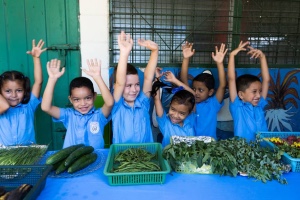
Nutrition and education is a winning combination
Izalco: A few years ago, Vanesa Cárcamo’s school canteen sold only drinks full of sugar, sandwiches filled with saturated fats and snacks high in salt and low in nutrients. She, like all the students, at the Cantón San Isidro school in Izalco, El Salvador didn’t see the problem with this – after all, the food tasted good! What they didn’t realize, however, was how bad it was for their health and future.
Now it’s a different story. The school canteen serves all the students, aged 4 to 18, healthy, nutritious meals made with local produce, such as vegetables and fruits. Some of the ingredients even come from the school garden, which is tended to and harvested by school students. The biggest change of all is that students are aware of the difference between healthy and non-healthy foods and make the effort to maintain a nutritious diet.
“Before, we didn’t have a healthy diet, focused on nutrition,” recalls 17-year-old Vanesa. “We didn’t understand the effect of food on our bodies, and we didn’t know that junk food was bad for us and our health,” she adds.
So, what caused this change?
In 2014 things first began to change for Vanesa and the other 1 500 students of the Cantón San Isidro school, when it started receiving the support of Food and Agriculture Organization (FAO) of the United Nations and the FAO-Brazil Cooperation. This partnership, in the framework of South-South and Triangular Cooperation, developed the Sustainable Schools methodology in Latin America and the Caribbean.
There are now 450 Sustainable Schools in El Salvador and Vanesa is one of 148 066 students to have benefited from this initiative. As a South-South and Triangular Cooperation initiative, the Sustainable Schools methodology was developed by the FAO-Brazil Cooperation, through the project, Consolidation of School Feeding in Latin America and the Caribbean. It is implemented by FAO, the Brazilian Cooperation Agency and the National Fund for Educational Development.
Noting that in El Salvador, 38 per cent of first-graders are overweight or obese, Diego Recalde, FAO Representative in the country, explains the importance of sustainable schools, “In El Salvador, we have been working alongside the FAO-Brazil Cooperation and the Ministry of Education to strengthen the school feeding programmes by training teachers and students and by providing technical assistance for policy formulation (School Feeding Law),” he says.
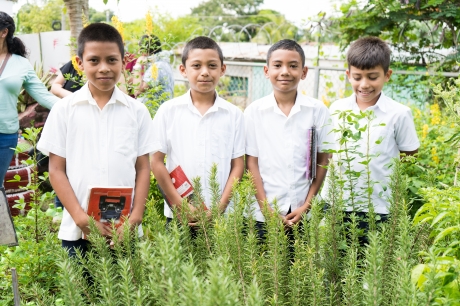
The initiative aims to encourage the participation of local communities, educate students on food and nutrition, offer healthy menus, use school gardens as teaching tools and procure ingredients from local family farmers.
The Cantón San Isidro school also selected students to become ambassadors of healthy eating habits, as part of the school’s ‘Youth Facilitators on Nutrition and Food Security initiative’ to help spread the word among classmates. In addition, the school garden became a live classroom for hands-on learning, capturing the attention of students, parents and teachers.
Vanesa confirms, “It is very important to have these topics of school feeding and nutrition in the curriculum. We are clear about what we should and should not eat daily and this is knowledge for life,” she says. “If this project had not come, I would never have started eating healthily.”
The school’s director, Manuel Guerrero, is vocal about the difference these changes have made to his students’ health. His school has become a role model for good practices in food and nutrition and a reference at the national level showing the benefits of the Sustainable Schools methodology.
“Our students have changed their attitude towards food. They have learned to distinguish between good and bad nutrition,” he says, adding that it has allowed them to choose the kind of food they eat not only at school but at home with their families too. Some parents also help take care of the school gardens, getting the entire family involved in forming healthy habits.
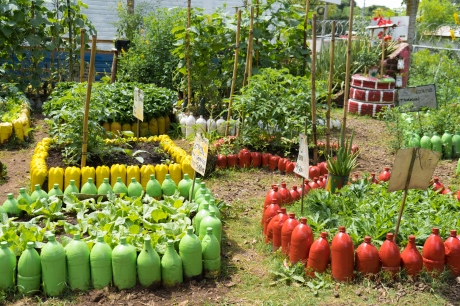
Thanks to the school garden initiative, there is “better attendance of children, greater participation of families and more interest from students,” Manuel says.
But the changes did not stay only in the school environment, as Vanesa explains, “I have shared much of the knowledge I learned with my family, and I am proud of that.” In fact, using the skills she learned in the school garden, Vanesa has created one at home too. “We have made a garden at home now and our diet has changed a lot. The garden is vital for us, and this is what I love the most. We eat a lot of vegetables that we grow ourselves.”
A healthy local economy
One big part of the Sustainable Schools initiative is to encourage the schools to purchase fresh produce from local family farmers.
Anyone can then put themselves forward as a supplier, including local parents, farming associations and cooperatives. Direct purchases from family farmers promote local development and generate a market for small producers.
According to Najla Veloso, the South-South and Triangular Cooperation initiative project’s coordinator, the implementation of the methodology has enhanced the national policy of school feeding and has improved “the education and health of children in more than 23 000 schools in 13 countries of Latin America and the Caribbean, offering better learning conditions, longer permanence in schools and guaranteeing the Human Right to Adequate Food for 1.6 million students.”
Schools aren’t just a place for learning academic subjects but for life skills too. They are a perfect place to promote education on nutritious diets, food security and health, helping set children up for life, FAO stated.
Source: the FAO News and Media office
– global bihari bureau


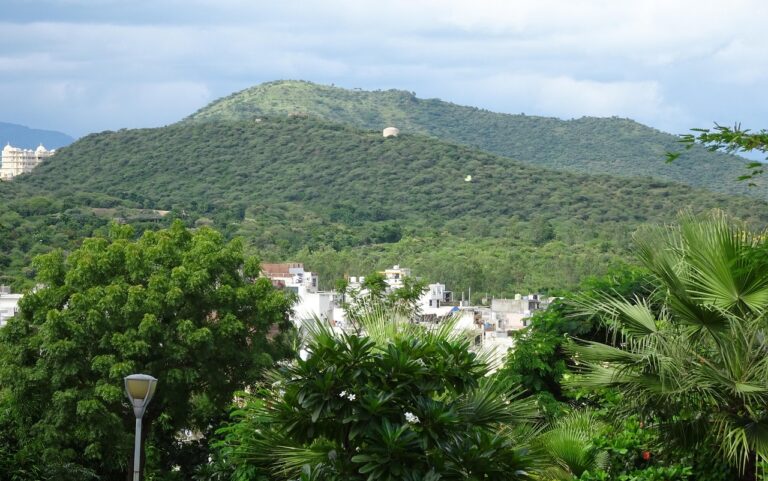


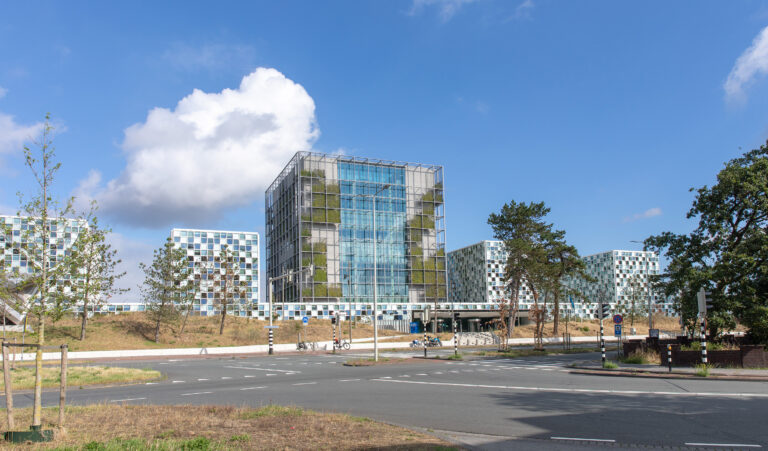
WONDERFUL Post.thanks for share..extra wait .. …